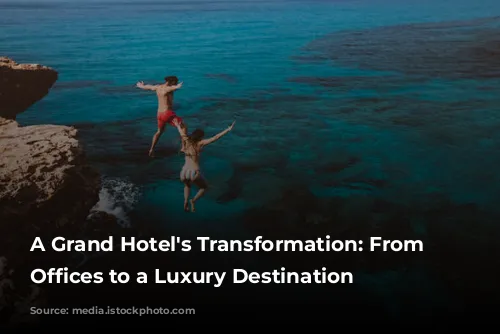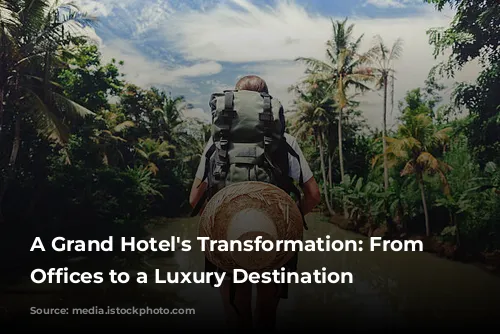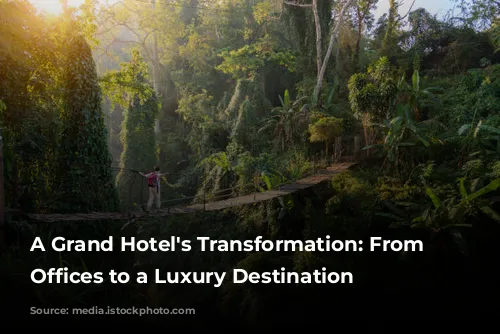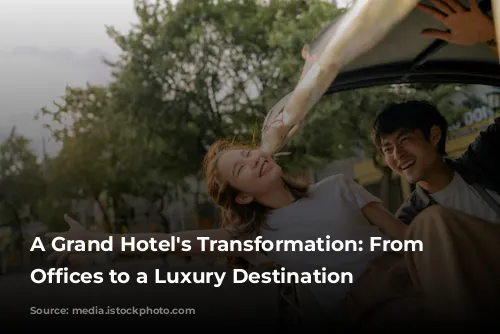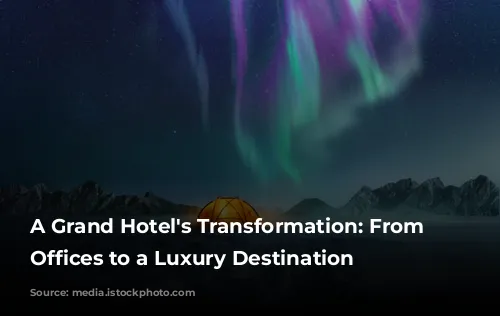The Corinthia Hotel London, a majestic structure perched on a triangular site in central London, boasts a rich history intertwined with British history and the allure of luxury hospitality. This iconic building, standing at the confluence of Northumberland Avenue and Whitehall Place, enjoys a coveted location between Trafalgar Square and the Thames Embankment. Its story is one of transformation, from a bustling hotel in the Victorian era to a prominent government building and back again to its present glory as a world-renowned hotel.
From Victorian Grandeur to Government Headquarters
The Corinthia Hotel’s journey began in 1885, when it opened its doors as the Metropole Hotel. This grand establishment, commissioned by the Gordon Hotels company, quickly became a popular destination for London’s elite and a favoured spot for significant events. Its close proximity to the Palace of Westminster and government offices in Whitehall made it a natural choice for government requisition during both World Wars. In the aftermath of World War II, the Ministry of Defence acquired the hotel, transforming it into a government office complex. For several decades, the building played a pivotal role in the nation’s affairs, its halls echoing with the footsteps of officials and the whispers of confidential meetings. However, in 2007, the building was deemed surplus to requirements and sold by Crown Estates. This marked the beginning of a new chapter in the hotel’s history.
A Revival of Glamour: The Corinthia Hotel Rises Again
Following its sale, the building underwent a meticulous restoration process, emerging as the Corinthia Hotel, a harmonious blend of traditional grandeur and modern luxury. This revival not only restored the hotel’s original splendour but also breathed new life into its iconic spaces. The hotel’s past as a government hub is interwoven with its present as a haven for discerning travellers, creating a captivating blend of history and contemporary elegance.
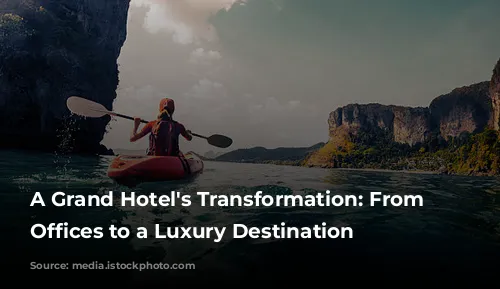
A Stage for History: The Metropole Hotel in the 20th Century
The Metropole Hotel’s early years were marked by a lively social scene. It hosted a variety of notable gatherings, including the annual dinners of the Aero Club and the Alpine Club. The hotel was also the starting point for the inaugural London to Brighton run in 1896. Notably, Prince of Wales, later King Edward VII, was a frequent visitor, holding court in the hotel’s grand ballroom. The hotel’s ballroom, with its magnificent bowfronted windows overlooking Whitehall Place, was a symbol of elegance and exclusivity. The hotel’s association with royalty further cemented its reputation as a place of prestige.
The outbreak of World War I saw the hotel once again requisitioned by the government, providing accommodation for government staff. It became a hub of wartime activity, witnessing the departure of the British Expeditionary Force and hosting high-ranking military figures like Field Marshals John French and Douglas Haig.
In the years following the war, the Metropole Hotel reopened its doors as a hotel, embracing the spirit of the roaring twenties. The “Midnight Follies” became a legendary cabaret fixture, attracting the city’s most fashionable and talented performers. In 1921, a young musician named Bert Firman joined the hotel’s Midnight Follies Orchestra, eventually becoming the orchestra’s leader at the tender age of 16. His tenure was followed by other notable bandleaders, including Mantovani, contributing to the hotel’s thriving music scene.
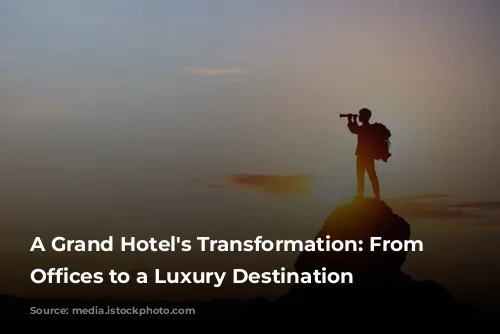
A Legacy of Sport and Royal Encounters
The Metropole Hotel’s connection with sports history is undeniable. In 1936, the hotel became a witness to a momentous sporting event: the England Rugby Union team’s historic victory over the touring New Zealand All Blacks, a victory immortalised by the legendary Prince Alexander Obolensky‘s three try tries. The England team celebrated their triumph in the hotel, sharing the same halls with their defeated rivals, the New Zealand All Blacks, in a testament to the camaraderie of the game.

A Government Hub Once Again: The Metropole Building in the Second World War
The government’s need for office space during the 1930s led to the Metropole Hotel being leased for £300,000 per year, accommodating various government departments. The hotel’s central location and spacious interiors made it an ideal choice for housing essential government functions. During World War II, the hotel was once again requisitioned, becoming home to the Ministry of Labour, Ministry of Transport, Air Ministry, and Ministry of Defence. It became a nerve centre of wartime activity, with its rooms serving as offices and meeting spaces for government officials. The Metropole Hotel was also instrumental in the planning of Operation Overlord, the D-Day invasion of Normandy. Room 424, in particular, gained historical significance as the first home of MI9 and its secretive subdivision, the Special Operations Executive.
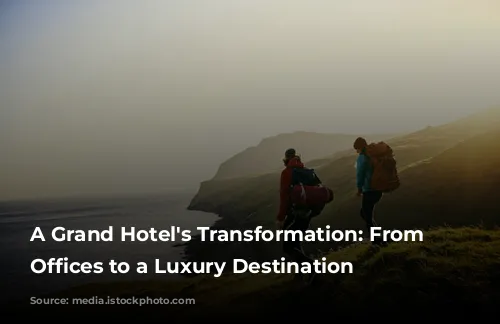
From Wartime Headquarters to Modern Luxury: The Corinthia Hotel’s Rebirth
Following World War II, the Metropole Hotel was acquired by the government and incorporated into the Crown Estate portfolio. For many years, it served as an extension of the Ministry of Defence’s headquarters, accommodating various departments, including the Air Ministry and the Defence Intelligence Staff. Its grand ballroom, known for its mirrored surfaces, became a venue for press conferences and other major events.
In the new millennium, the Metropole Hotel stood vacant for several years before undergoing a remarkable transformation. A consortium of investors acquired the building in 2007 and embarked on a meticulous renovation project, restoring its historical grandeur and modernising its amenities. In 2011, the building reopened as the Corinthia Hotel, ushering in a new era of luxury hospitality.

A Cinematic Icon: The Corinthia Hotel in Modern Media
The Corinthia Hotel’s captivating history and striking architecture have made it a popular setting for cinematic productions. The hotel has graced the silver screen, featuring in films like Skyfall and Red Sparrow, further cementing its reputation as a glamorous and iconic location. The official announcement of Skyfall, the James Bond film, was made at a press conference held at the Corinthia Hotel, highlighting the hotel’s association with the world of espionage and intrigue. The hotel’s grand interiors and elegant exteriors provided a stunning backdrop for Red Sparrow, adding a touch of opulence and sophistication to the thriller.
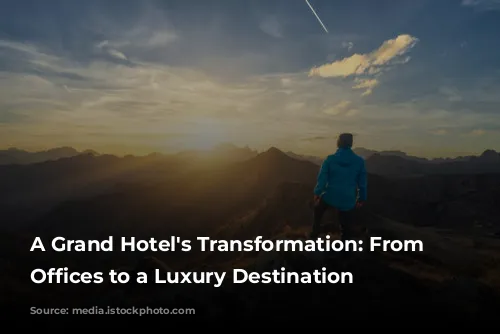
The Corinthia Hotel: A Fusion of Past and Present
The Corinthia Hotel stands today as a testament to the enduring power of history and the allure of luxury. Its story is a captivating journey through time, showcasing the evolution of a grand hotel from its Victorian origins to its present status as a luxurious haven in the heart of London. The hotel’s rich past, interwoven with its present-day elegance, continues to enchant its guests, offering them a unique and unforgettable experience.
